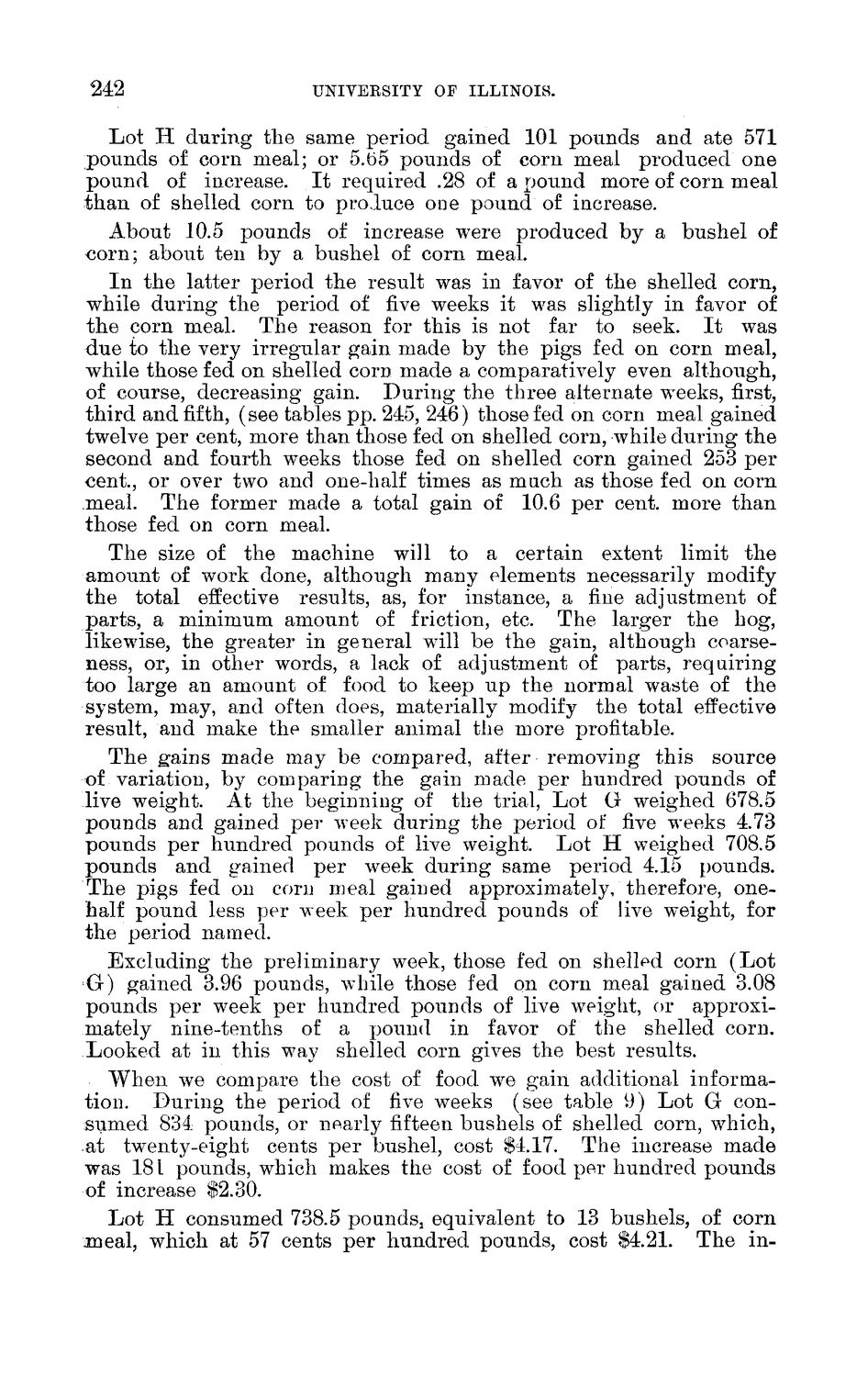| |
| |
Caption: Board of Trustees Minutes - 1888
This is a reduced-resolution page image for fast online browsing.

EXTRACTED TEXT FROM PAGE:
242 UNIVEESITY OF ILLINOIS. Lot H during the same period gained 101 pounds and ate 571 pounds of corn meal; or 5.to5 pounds of corn meal produced one pound of increase. I t required .28 of a pound more of corn meal than of shelled corn to produce one pound of increase. About 10.5 pounds of increase were produced by a bushel of corn; about ten by a bushel of corn meal. In the latter period the result was in favor of the shelled corn, while during the period of five weeks it was slightly in favor of the corn meal. The reason for this is not far to seek. I t was due to the very irregular gain made by the pigs fed on corn meal, while those fed on shelled corn made a comparatively even although, of course, decreasing gain. During the three alternate weeks, first, third and fifth, (see tables pp. 245, 246) those fed on corn meal gained twelve per cent, more than those fed on shelled corn, while during the second and fourth weeks those fed on shelled corn gained 253 per cent., or over two and one-half times as much as those fed on corn meal. The former made a total gain of 10.6 per cent, more than those fed on corn meal. The size of the machine will to a certain extent limit the amount of work done, although many elements necessarily modify the total effective results, as, for instance, a fine adjustment of parts, a minimum amount of friction, etc. The larger the hog, likewise, the greater in general will be the gain, although coarseness, or, in other words, a lack of adjustment of parts, requiring too large an amount of food to keep up the normal waste of the system, may, and often does, materially modify the total effective result, and make the smaller animal the more profitable. The gains made may be compared, after removing this source of variation, by comparing the gain made per hundred pounds of live weight. At the beginning of the trial, Lot G weighed 678.5 pounds and gained per week during the period of five weeks 4.73 pounds per hundred pounds of live weight. Lot H weighed 708.5 pounds and gained per week during same period 4.15 pounds. The pigs fed on corn meal gained approximately, therefore, onehalf pound less per week per hundred pounds of live weight, for the period named. Excluding the preliminary week, those fed on shelled corn (Lot G) gained 3.96 pounds, while those fed on corn meal gained 3.08 pounds per week per hundred pounds of live weight, or approximately nine-tenths of a pound in favor of the shelled corn. Looked at in this way shelled corn gives the best results. When we compare the cost of food we gain additional information. During the period of five weeks (see table 9) Lot G consumed 834 pounds, or nearly fifteen bushels of shelled corn, which, at twenty-eight cents per bushel, cost $4.17. The increase made was 18 L pounds, which makes the cost of food per hundred pounds of increase $2.30. Lot H consumed 738.5 pounds, equivalent to 13 bushels, of corn jmeal, which at 57 cents per hundred pounds, cost $4.21. The in-
| |